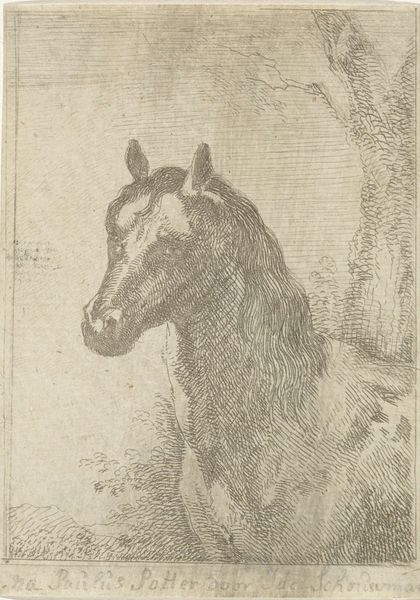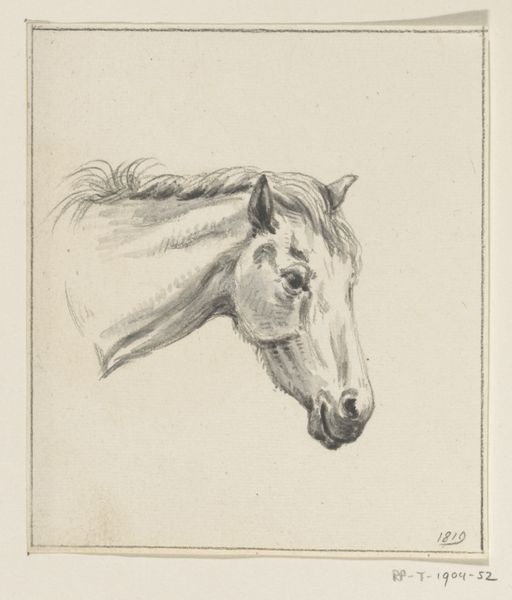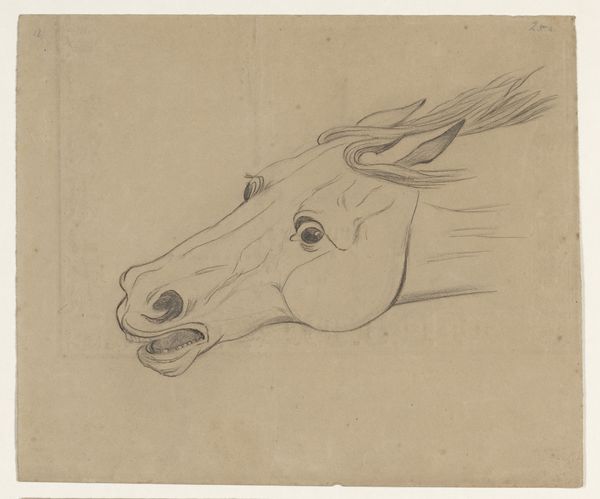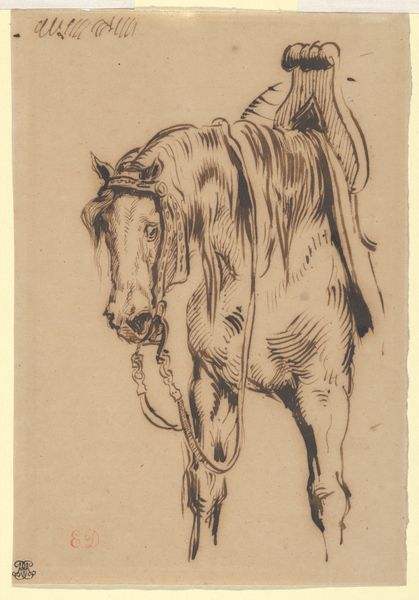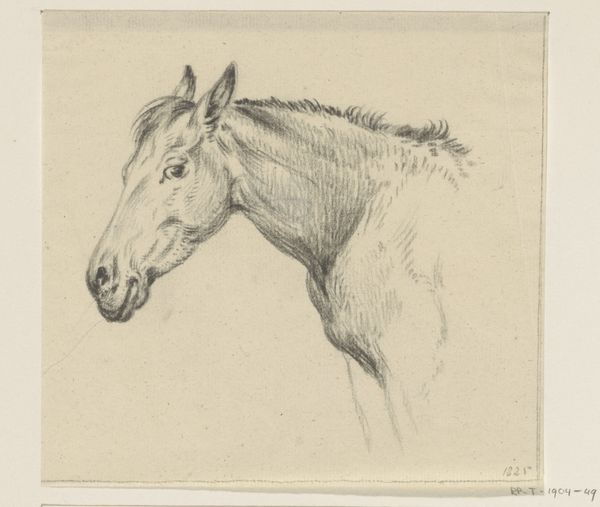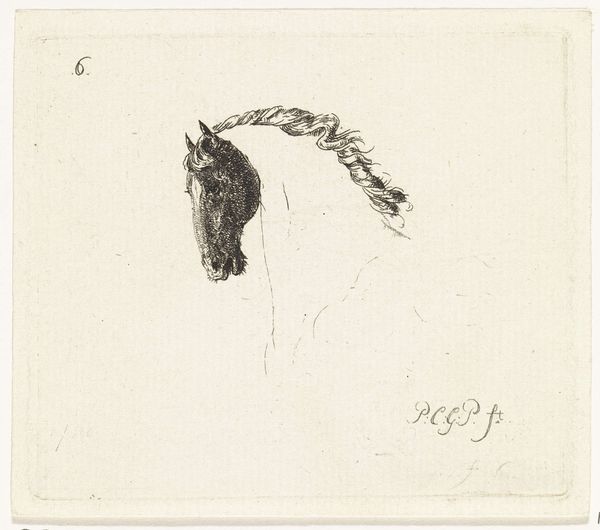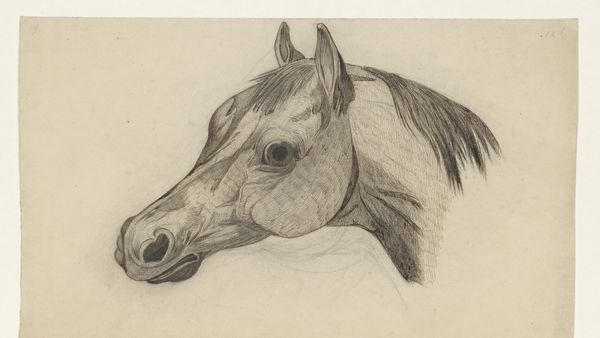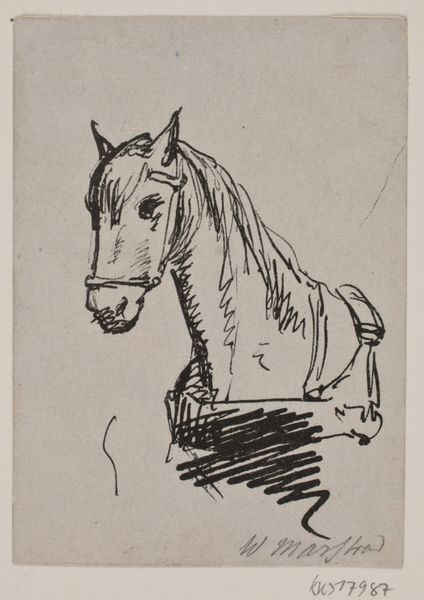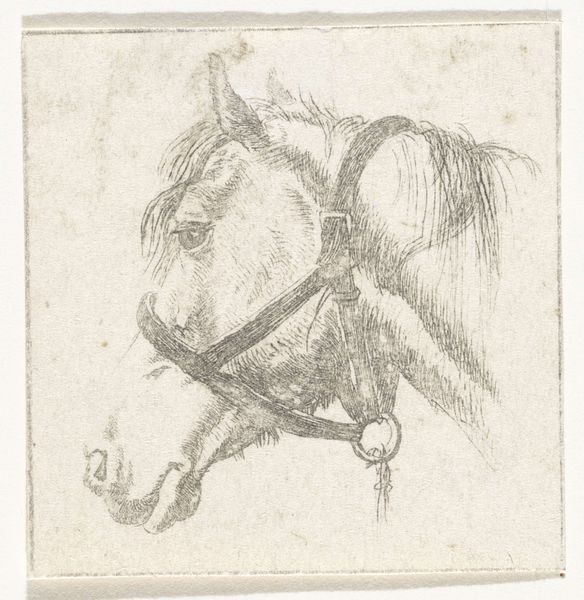
drawing, pencil
#
portrait
#
drawing
#
baroque
#
pencil drawing
#
pencil
#
realism
Dimensions: height 169 mm, width 148 mm
Copyright: Rijks Museum: Open Domain
Curator: This is a pencil drawing by Cornelis Troost, dating from 1706 to 1750, titled “Paard, van voren gezien, de kop naar links"—or, in English, "Horse, seen from the front, head to the left.” It's part of the Rijksmuseum's collection. What strikes you first? Editor: The texture. It's fascinating how Troost renders the horse's form with such economical hatching. There’s an inherent tension in the marks—a sort of energetic stillness. Curator: Horses, throughout art history, often embody concepts like nobility, strength, and freedom. Troost, however, provides us with something different, and his depiction avoids grand symbolism by adopting an attitude that prioritizes direct observation. Editor: Precisely! The diagonal strokes contouring the body do a great job. We perceive volume despite the economy of detail; Troost avoids superfluous ornamentation, directing us towards pure form and skillful lines. Curator: While some see the horse as a symbol of power and status, others view them in a martial context, linked with war and conquest. This portrait escapes such associations by focusing only on the individual animal, so we relate to its inherent animalism instead. Editor: I agree completely, especially by comparing its baroque style to a realism style. Look at the contrast. Curator: Baroque, a highly ornate and extravagant style is associated with grandeur and emotion, whereas Realism sought to capture subjects honestly, even if unflattering. Combining them like this offers an important perspective. Editor: By shifting attention from symbolism to visual experience, this drawing opens a new awareness. Its form supersedes the need for meaning. Curator: Yes, it allows the viewer to appreciate the animal without being caught up in the associated narratives, letting the qualities of empathy come through. Editor: I now have a different lens through which to examine artistic approaches to Realism, especially regarding technique and semiotics. Curator: As do I, especially in how our cultural understanding informs an image, by removing assumptions based on art history we approach it on new terms.
Comments
No comments
Be the first to comment and join the conversation on the ultimate creative platform.
